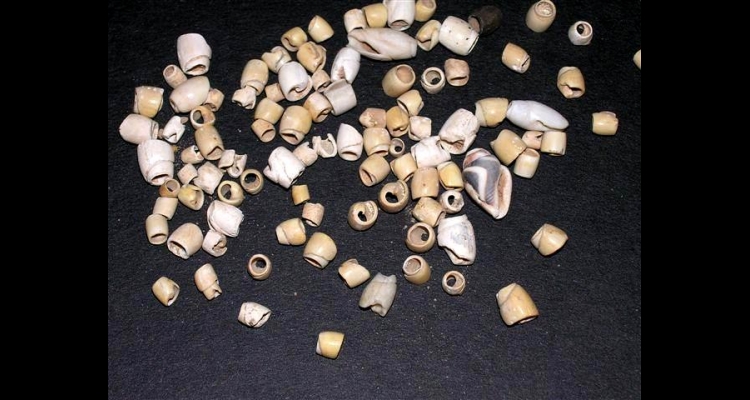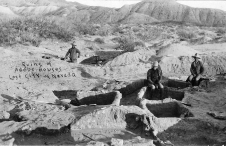Prehistoric Trade at Lost City
Many artifacts found in the Lost City sites at Pueblo Grande de Nevada in the southern part of the state were transported long distances by prehistoric people. Members of the Anasazi community may have traveled seasonally or traded with other travelers for "exotic" items. Some of the non-local goods found at the Lost City are shell beads from California coastal areas, obsidian from Utah or central Nevada, turquoise from California, and pottery from Anasazi groups in what is now Arizona and Utah.
Items that may have been transported out of the area are salt, turquoise, and even food goods. While some archaeologists believe the Lost City may have served as a trade distribution center for coastal shells, California turquoise, and local rock salt, more recent research does not support this theory. Trade and travel probably occurred on a smaller, household-to-household scale. In historic times the Hopi were still making treks for many miles on foot to collect salt in the Grand Canyon. The salt caves in Southern Nevada may have been another place for traditional gathering by the earlier Anasazi people.
Some researchers believe the local Anasazi traded food goods for pottery. Much of the pottery found at the Lost City was made in the mountains of northern Arizona about eighty miles east of the Lost City. It would be hard to grow corn in the high mountains north of the Grand Canyon. The people living in the higher mountains might have brought their pottery to the low valley to trade for corn. Both corn and salt deteriorate over time so it is difficult to trace their trade distribution, but pottery is a long-lasting, durable item. Some of the red pottery found in the Lost City sites was made in the Four Corners area of Utah, Colorado, Arizona, and New Mexico. The consistency and clay as well as some of the design styles of this pottery are from southwestern Utah. Some of the gray and painted pottery has the mineral olivine mixed in the clay for consistency. Olivine is found in volcanic areas north of the Grand Canyon.




